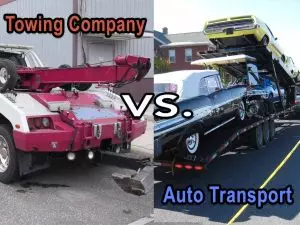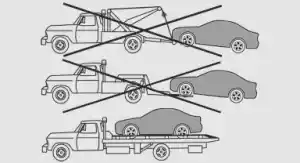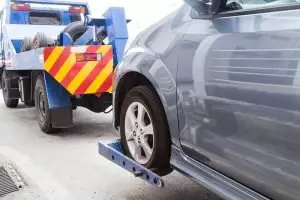Towing a car with another car may seem like a convenient solution when faced with a breakdown or mechanical issues on the road. However, before you hitch up and start towing, it is important to consider the potential risks and safety concerns that come with this practice. This article explores the factors to consider when deciding whether it is acceptable to tow a car with another car, providing insights into the potential consequences and alternatives to ensure both your safety and the integrity of your vehicles.
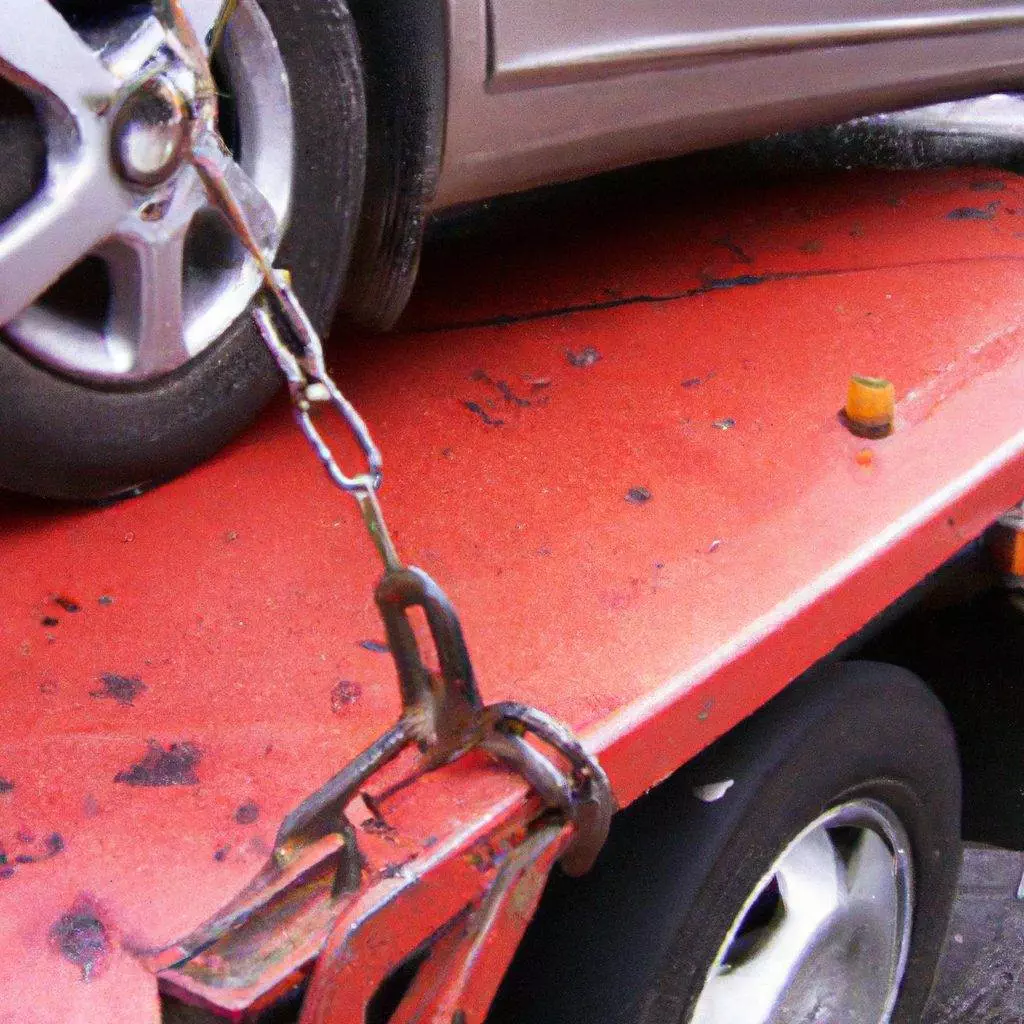
Potential Risks of Towing a Car with Another Car
Weight and Towing Capacity
When considering towing a car with another car, it is important to understand the weight and towing capacity limits of both vehicles involved. The towing vehicle’s capacity, which can be found in the owner’s manual or by consulting the manufacturer, must be able to handle the weight of the car being towed. If the weight exceeds the towing capacity, it can put significant strain on the towing vehicle’s engine and transmission, leading to potential damage.
Transmission Damage
Towing a car with another car can potentially cause damage to the transmission of the towing vehicle. The additional weight and strain put on the transmission while towing can cause overheating and premature wear and tear. This risk is particularly high when towing large or heavy cars, as they can exert excessive force on the transmission system.
Steering and Braking Issues
Towing a car with another car can affect the steering and braking capabilities of both vehicles. The increased weight and altered driving dynamics can make it more difficult to steer and control the towing vehicle, leading to potential accidents or loss of control. Braking distances may also be affected, requiring more time and distance to come to a complete stop. It is crucial for drivers to be aware of these potential issues and adjust their driving accordingly.
Alignment and Suspension Problems
Towing a car with another car can cause alignment and suspension issues in both vehicles. The added weight and strain can cause misalignment in the towing vehicle’s wheels, leading to uneven tire wear and decreased stability. The suspension system may also be affected, causing a rougher and less comfortable ride. Regular maintenance and inspections are necessary to ensure the proper alignment and functioning of both vehicles.
Legal Considerations for Towing with Another Car
Applicable Laws and Regulations
Before towing a car with another car, it is essential to familiarize yourself with the applicable laws and regulations in your jurisdiction. Different states and countries may have specific rules regarding towing, including weight limits, equipment requirements, and licensing requirements. Familiarizing yourself with these laws can help ensure that you are in compliance and avoid potential legal issues.
Safety Equipment Requirements
In many jurisdictions, there are specific safety equipment requirements that must be met when towing a car. This often includes the use of safety chains or cables, properly sized tow mirrors, and appropriate lighting and signage to indicate that the vehicle is being towed. Failure to comply with these requirements can result in fines or penalties.
Liability and Insurance Coverage
Towing a car with another car can also have implications for liability and insurance coverage. In the event of an accident or damage caused during the towing process, it is important to understand who is responsible and whether your insurance policy covers such incidents. Some insurance policies may explicitly exclude towing-related incidents or have limitations on coverage. It is crucial to consult with your insurance provider to ensure that you have appropriate coverage in place.
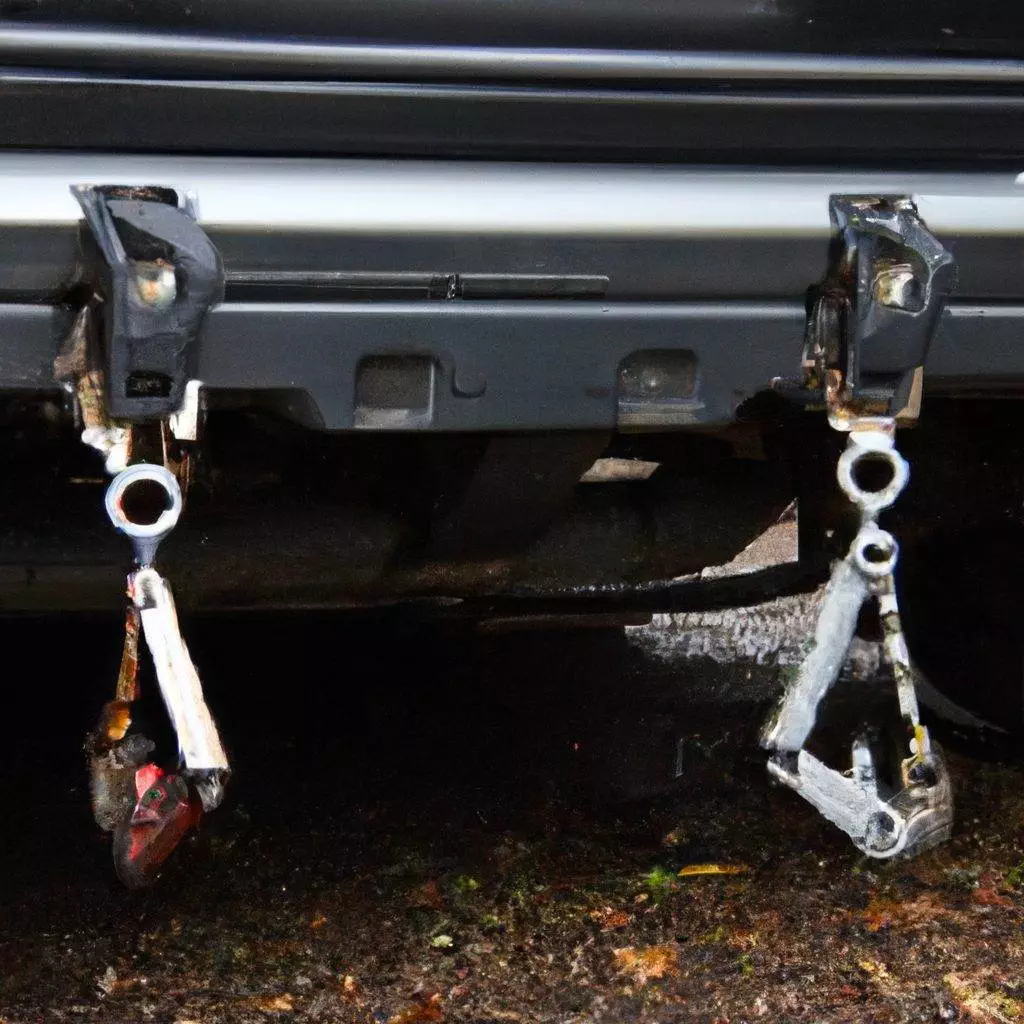
Methods of Towing a Car with Another Car
Using a Tow Strap or Rope
One method of towing a car with another car is by using a tow strap or rope. This method involves securely attaching the tow strap or rope to both vehicles and allowing the towing vehicle to pull the disabled vehicle. It is important to choose a sturdy tow strap or rope that can handle the weight of the towed vehicle and to follow proper attachment procedures to minimize the risk of detachment during towing.
Using a Tow Dolly
Using a tow dolly is another common method of towing a car with another vehicle. A tow dolly is a small trailer-like device that typically has two wheels on which the front wheels of the towed vehicle are placed. The tow dolly is then attached to the towing vehicle, allowing the rear wheels of the towed vehicle to roll freely. This method allows for greater control and reduces the strain on the towing vehicle’s transmission.
Using a Tow Bar
A tow bar is a device that connects the towing vehicle and the towed vehicle directly. It is typically attached to the front bumper or frame of both vehicles and allows for a more secure connection during towing. Tow bars are commonly used for flat towing, where all four wheels of the towed vehicle are on the ground. This method provides stability and control but requires careful consideration of the towing vehicle’s capacity.
Safety Precautions When Towing a Car with Another Car
Inspecting the Towing Vehicle
Before towing a car with another car, it is essential to thoroughly inspect the towing vehicle. Check for any mechanical issues, such as engine problems or signs of wear and tear in the transmission. Make sure that the tires are properly inflated and in good condition. It is also important to ensure that all lights and signals are functioning correctly to maintain visibility on the road.
Properly Securing the Towed Vehicle
Properly securing the towed vehicle is crucial for the safety of both vehicles involved. Follow the manufacturer’s instructions for attaching the towing equipment, whether it is a tow strap, tow dolly, or tow bar. Double-check that all connections are secure and that the towed vehicle is properly balanced to prevent any swaying or instability during towing. Regularly check the connections during the journey to ensure that they remain secure.
Maintaining Proper Distance and Speed
When towing a car with another car, it is important to maintain a safe distance from other vehicles on the road and to drive at an appropriate speed. Towing a car adds weight and alters the driving dynamics of the towing vehicle, which can affect its maneuverability and braking capabilities. Leave extra space for braking and turning, and adjust your speed to allow for safe and controlled driving.
Alternative Options to Towing with Another Car
Calling a Professional Tow Truck
If you are unsure about your ability to safely tow a car with another car or if the situation is more complex, it is recommended to call a professional tow truck. Professional tow truck operators have experience, specialized equipment, and proper training to handle towing situations safely and efficiently. They can ensure that the towing process is carried out properly, minimizing the risk of damage or accidents.
Renting a Trailer
Another alternative to towing a car with another car is to rent a trailer. Many rental companies offer trailers specifically designed for towing vehicles. Renting a trailer allows for greater control and reduces the strain on the towing vehicle’s transmission. However, it is crucial to ensure that the towing vehicle is capable of safely towing the weight of both the trailer and the towed vehicle.
Important Factors to Consider before Towing with Another Car
Vehicle Compatibility
Before attempting to tow a car with another car, it is important to consider the compatibility of the two vehicles. Ensure that the towing vehicle has the appropriate towing capacity to handle the weight of the towed vehicle. Also, consider the compatibility of the towing equipment, such as tow straps, tow dollies, or tow bars, with both vehicles. Using compatible equipment reduces the risk of accidents or damage during towing.
Driver Experience and Skill Level
Towing a car with another car requires skill and experience, particularly when it comes to handling the altered driving dynamics and potential challenges on the road. If you are new to towing or lack experience in handling towing situations, it is recommended to seek the assistance of a professional or to consider alternative options such as calling a tow truck. Adequate training and practice can help improve your towing skills and ensure safer towing experiences.
Road Conditions and Distance of Travel
Consider the road conditions and the distance of travel when deciding whether to tow a car with another car. Towing on rough or uneven terrain may pose additional challenges and increase the risk of damage to both vehicles. Similarly, long-distance travel may put a significant strain on the towing vehicle’s engine and transmission. Assess the condition of the roads, including inclines, declines, and curves, to determine if towing with another car is suitable.
Step-by-Step Guide: How to Tow a Car with Another Car
Assessing the Towing Vehicle
Start by thoroughly inspecting the towing vehicle, including the engine, transmission, tires, and lights. Ensure that all mechanical components are in good working condition and that the vehicle is capable of safely towing the weight of the towed vehicle. Consult the vehicle’s owner’s manual or manufacturer for the towing capacity and any specific instructions or recommendations for towing.
Preparing the Towed Vehicle
Prepare the towed vehicle by ensuring that it is in neutral and that the parking brake is disengaged. If using a tow dolly or tow bar, position the towed vehicle’s wheels properly on the equipment. Secure all loose items and remove any additional weight from the towed vehicle, such as personal belongings or heavy objects, to reduce strain during towing.
Connect the Vehicles
Follow the specific instructions for the chosen method of towing, whether it is using a tow strap, tow dolly, or tow bar. Attach the towing equipment securely to both vehicles, ensuring that all connections are properly fastened and that the towed vehicle is level and balanced. Double-check the connections and test for any unwanted movements or play before starting the towing process.
Towing the Car
Begin towing by slowly and cautiously accelerating the towing vehicle. Maintain a steady and controlled speed, avoiding sudden acceleration or braking that can cause jerking or instability in the towed vehicle. Pay attention to the increased braking distances and allow for additional time to come to a complete stop. Maintain a safe distance from other vehicles and regularly monitor the towed vehicle for any signs of swaying or instability.
Necessary Precautions during Towing
During the towing process, it is essential to continually monitor the towing vehicle and the towed vehicle for any signs of problems or issues. Regularly check the connections to ensure they remain secure and inspect the tires of both vehicles for signs of wear or damage. If any unusual noises, vibrations, or handling difficulties arise, safely pull over and assess the situation before continuing.
Conclusion
Towing a car with another car can be a convenient solution in certain situations, but it is not without its risks and considerations. Understanding the potential risks and legal implications, as well as taking necessary safety precautions, is crucial to ensure a safe and successful towing experience. Before attempting to tow a car with another car, carefully assess the vehicle compatibility, driver experience, road conditions, and distance of travel. If in doubt, it is always advisable to seek professional assistance or consider alternative options such as calling a tow truck or renting a trailer. By following the proper guidelines and guidelines outlined in this article, you can make informed decisions and safely tow a car with another car when necessary.
